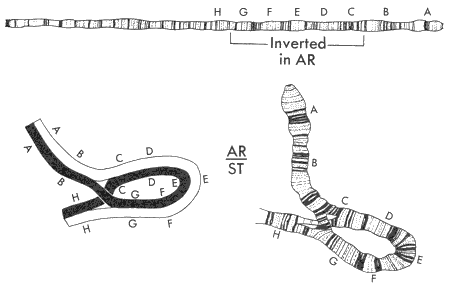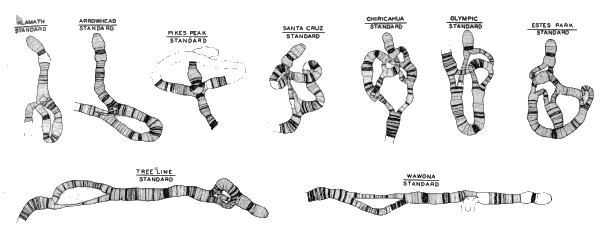
Chromosome inversion polymorphism in Drosophila pseudoobscura

Chromosome inversion polymorphism in Drosophila pseudoobscura
D.
pseudoobscura is a wild relative of the common laboratory
fruit fly, D. melanogaster. The Standard (ST)
arrangement of the third chromosome is characterized by a
particular polytene banding pattern,
due to alternating euchromatic (light) and heterochromatic
(dark) gene regions. A paracentric inversion
involving about a third of the chromosome produces the Arrowhead
(AR) arrangement. Chromosome pairing in meiosis requires
formation of a characteristic inversion loop in order to
bring homologous gene segments (region C-G) together.
Individuals with two different third chromosomes are called heterokaryons (by analogy with
"heterozygotes"; individuals with identical chromosomes are homokaryons).
Other chromosome polymorphisms (such as Chiricahua [CH])
involve multiple inversions, and inversions-within-inversions,
resulting in complicated loops (below).
Th Dobzhansky's
(1900 - 1975) decades-long study of polytene patterns in Drosophila
was the first direct evidence of extensive genetic
polymorphism in a wild species. He was able to link pattern
frequencies with adaptive changes in wild populations, including
altitude and seasonal changes in temperature and aridity.
